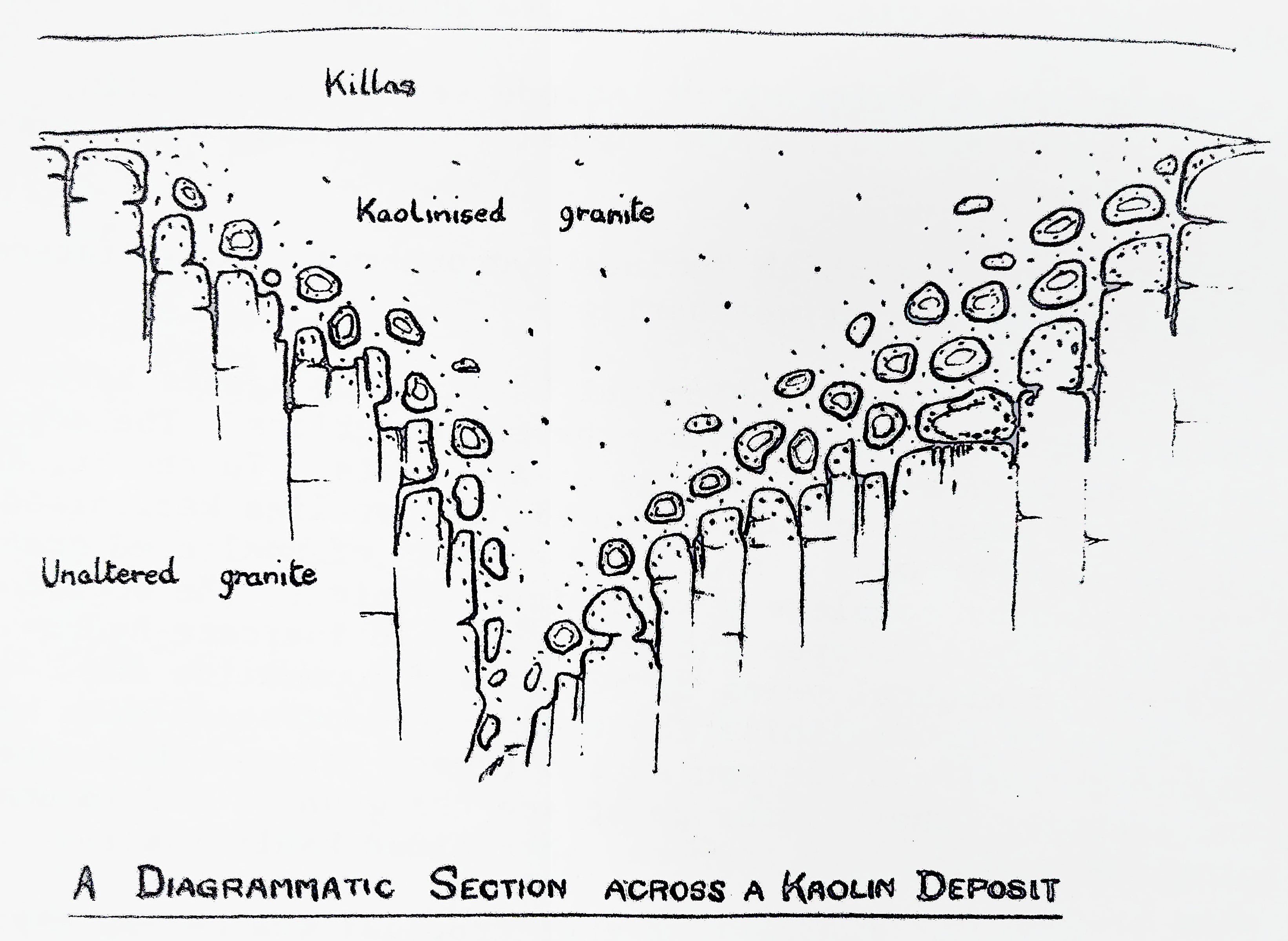The China Clay Deposits of South West England

With acknowledgements to Mr C M Bristow and his review “The Evidence for the Origin of the Kaolin Deposits in South West England”
The china clay deposits of South West England closely resemble those of Brittany and have similarities with those of Eastern Europe e.g. Czechoslovakia. There is considerable and and continuing discussion as to the mode of their origin; the two main theories for kaolinisation are (1) tropical weathering and (2) the action of hydro-thermal solutions.
Kaolin deposits are classified into two groups: - (1) Sedimentary deposits which include sedimentary kaolin, kaolinitic sands and ball clays, usually associated with fresh water deposits.
(2) Primary deposits which include hydrothermal and solfatara deposits and products of weathering.
In South West England the principal kaolinising agents have been generally considered to be hydro-thermal solutions. The deposits are frequently as funnel-shaped masses or as sheets, Im the St. Austell area, unkaolinised granite or unaltered killas overlies kaolinised granite e.g. at Goonbarrow. Also, ‘core-stones’ of unaltered granite are seen surrounded by completely kaolinised granite. The occurance of minerals such as tin, copper and wolfram would indicate hydrothermal alteration; mineral veins of quartz and tourmaline are bordered by zones of tourmalinisation (where feldspars and mica have altered to tourmaline) and greisenisation (where feldspar has altered to mica and quartz). These veins penetrate the granite and in some areas, solutions moving along them may have aided kaolinisation.
There are, however, indications that tropical weathering may played a part. During Tertiary times the South West of England was much nearer to the Equator than it is today and the climate of Britain was tropical or sub-tropical. In the Oligocene ball clays S. Devon remains of sub-tropical plants have been found. Deep tropical weathering, in which the alkalis and silica are ase y ens from the surface (lateritic) layer, can cause development of a kaolinised horizon beneath. There is evidence that this type of weathering did occur in places in Cornwall and Devon. The kaolin deposits though show a lack of zoning and whereas weathering of this type would affect most rocks, kaolinisation occurs preferable in association with granite with little alteration of other rocks.
The Cornish granites e.g. St, Austell show a high readiogebnic content and this would cause a release of heat which could in turn slow the rate of cooling and so increase the period for alteration to kaolin.
The special quality and quantity of the kaolin or china-clay deposits of South West England are therefore due to a combination of complicated processes.

